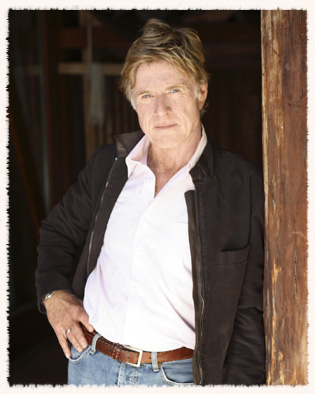In addition to his work as an actor, director and producer, Robert Redford has been a noted environmentalist and activist since the early 1970s and has served for some 30 years as a Trustee of the Board the Natural Resources Defense Council. Redford has been involved with many pieces of environmental legislation including the Clean Air Act (1974-75), The Energy Conservation and Production Act (1974-76) and the National Energy Policy Act (1989).
In 1975, he fought against the building of a coal-fired power plant planned for an area in Southern Utah surrounded by five national parks. The plant was never built. In 1997, after a long and contentious battle, in which Redford worked with a large coalition of activists to save this very same area from commercial exploitation, President Clinton designated it the Grand Staircase-Escalante National Monument.
In the early 80s, Redford founded the Institute for Resource Management (IRM), which he led throughout the decade, bringing together environmentalists and industrialists to resolve conflicts and promote sustainable development. Under Redford’s tenure the IRM tackled issues ranging from the future of the electric power industry to resource development on Indian lands, off-shore oil leasing in the Bering Sea and urban air quality in Denver, Phoenix, Sacramento and New York City.
Redford’s final initiative under the auspices of the IRM was his 1989 global warming summit, Greenhouse Glasnost in Sundance, Utah. It brought together the Soviet Academy of Sciences and policymakers, industry leaders, scientists and artists from the U.S. and the Soviet Union to focus on communicating the facts about global warming to a wider public audience. His Sundance Summit: A Mayor’s Gathering on Climate Change has followed up this work with the third annual summit having taken place in September 2007.
In 1998, Redford and his family put 860 acres of Sundance, Utah wilderness into a land trust in order to protect it from development for all time and recently increased the family’s protected acreage to some 5,000 acres, and established the Sundance Preserve. This protected wilderness is home to The Redford Center, which is the culmination of 25 years of public policy and other transformational work to foster new ideas about compelling issues of the day. It is devoted to a distinct brand of problem solving, which embraces the belief that creativity and innovation are at the core of any significant social or sector change. The Center will continue to apply its well-tested and unique formula to the equally unique challenges of the 21st Century.
Redford remains active with local, regional and national organizations on a variety of environmental, arts and justice issues. Most recently he fought one of the last anti-environmental actions of the Bush Administration involving opening to oil and gas development some 360,000 acres of wild public land in Utah, much adjacent to protected national parks and monuments. Announced on the day Barack Obama would be elected President of the United States, Redford and a coalition of environmental groups waged a multi-faceted campaign which included the engagement of hundreds of thousands of citizens, concentrated internet and media campaigns, as well as a successful lawsuit to stop the enactment of development leases sold to industry. On February 5, 2009, three months after the original announcement by the Bush Bureau of Land Management, current Interior Secretary Ken Salazar voided the 77 leases, which would have allowed oil and gas drilling on these public lands in Utah.
Robert Redford has received numerous awards for his environmental work, including the 1989 Audubon Medal Award and the 1987 United Nations Global 500 Award, the 1993 Earth Day International Award and the 1994 Nature Conservancy Award. He was also the recipient of the 1997 National Medal for the Arts by President Clinton and the 2001 Freedom in Film Award presented by the First Amendment Center. He was honored with the 2002 Pell Award for Excellence in the Arts: Lifetime Achievement Award and the 2004 Forces for Nature Lifetime Achievement Award from the Natural Resources Defense Council (NRDC). In December 2005, Redford accepted the Kennedy Center Honors for his “distinguished achievement in the performing arts and in recognition of his extraordinary contributions to the life of our country.”
In addition to the NRDC, he joined the advisory board of the Land Trust of Napa Valley in 2004 and is a board member of The Gaylord A. Nelson Environmental Endowment at the Institute for Environmental Studies at the University of Wisconsin. He also serves on the National Council of the Smithsonian’s new National Museum of the American Indian. His board memberships have included the Environmental Defense Fund, The Smithsonian Institution, Environmental Policy Center, the Navajo Education and Scholarship Foundation, the Solar Lobby, and Yosemite Institute among others. He is a published author (The Outlaw Trail). In 1979, he produced The Solar Film, a short film about solar energy that was nominated for an Academy Award. Other documentaries he produced include, the award-winning Yosemite: Fate of Heaven and the feature length documentary, Incident at Oglala. He most recently served as executive producer on the 2007 feature documentary, The Unforeseen, a story of development encroachment in Barton Springs, Texas. His Redford Center at the Sundance Preserve co-produced and is doing innovative grassroots distribution on Fighting Goliath: The Texas Coal Wars.


